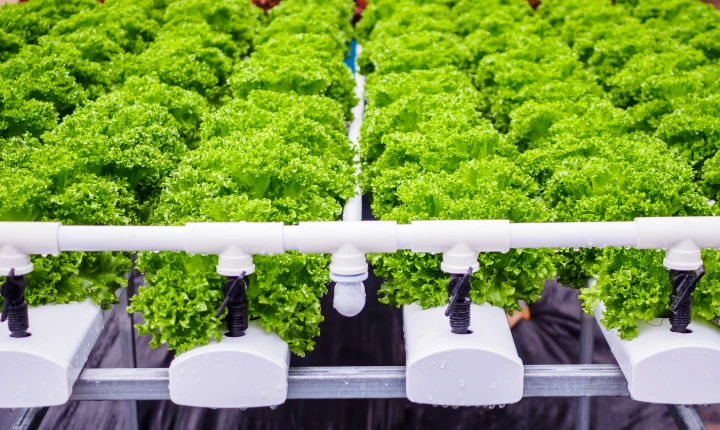Aquaponics: Symbiotic Integration of Fish Farming and Plant Cultivation
Aquaponics represents a fascinating and symbiotic approach to vertical farming, merging fish farming (aquaculture) with plant cultivation (hydroponics).
This innovative system capitalizes on the interconnectedness between fish and plants, creating a mutually beneficial relationship that offers unique advantages over traditional farming methods.
At the heart of aquaponics lies the aquaponic system, which consists of three key components: fish tanks, grow beds, and nutrient cycling. The fish tanks house aquatic organisms, such as fish, which produce waste rich in ammonia. This waste acts as a vital nutrient source for the plants. The nutrient-rich water is then pumped into the grow beds, which contain a medium (such as gravel or clay pebbles) for the plants to grow in. As the water flows through the grow beds, the plants uptake the nutrients, effectively purifying the water for the fish. This continuous cycle of nutrient cycling ensures a sustainable and closed-loop system.
One of the primary benefits of aquaponics is its remarkable water efficiency. Compared to traditional farming, aquaponics reduces water usage significantly. The water is recirculated within the system, minimizing water loss through evaporation or runoff. The plants take up only the necessary amount of water, and excess water is filtered and returned to the fish tanks. This closed-loop system can reduce water consumption by up to 90% compared to conventional soil-based agriculture, making aquaponics a sustainable solution, particularly in water-scarce regions.
Another advantage of aquaponics is the organic nutrient supply. Unlike traditional farming, which often relies on synthetic fertilizers, aquaponics provides natural, organic nutrients for plant growth. The fish waste acts as a nutrient source, eliminating the need for additional fertilizers. This organic nutrient supply promotes healthier plant growth and enhances the nutritional value of the harvested crops.
Aquaponics offers a unique dual harvest opportunity, allowing for the simultaneous cultivation of fish and vegetables. While the plants thrive on the nutrient-rich water, the fish grow in a healthy and well-maintained environment. This means that in addition to a bountiful vegetable harvest, aquaponics farms can also yield a valuable fish harvest. This dual functionality increases productivity and diversifies the revenue streams for farmers, making aquaponics an economically viable and sustainable farming method.
By integrating fish farming with plant cultivation, aquaponics exemplifies the remarkable potential of symbiotic relationships in vertical farming. Its benefits, including reduced water usage, organic nutrient supply, and the opportunity for dual harvests of fish and vegetables, make aquaponics an exciting and environmentally friendly approach to sustainable agriculture.



